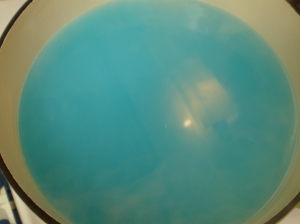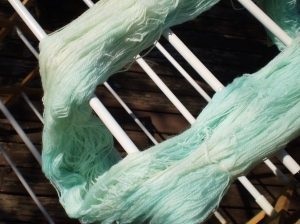OK, it’s officially official. I’m out of green yarn. (OK, not 100% out of green yarn, but close enough that I know for a fact I won’t make it to the end of this sweater. Unless I make this into a crop-top with 3/4 sleeves.)
So now, it’s time to buy some more yarn. In a perfect world, I’d love to get more of the same yarn (Douglas Fir), but I can’t imagine that the dye lots will be exactly the same, 10+ years after I bought this yarn.
So, I’ve gone through the Webs and picked out a couple favorite colors to do a series of mock-ups.
(My favorite) Fennel. Fairly low-contrast. I like the green-on- green, and I’d imagine it won’t take too much away from the subtle mistake-rib yoke.

(The kid’s favorite) Black Cherry. Honestly, they wanted red red, but I talked them down to this pretty garnet-y shade. Looks nice, but I can’t help but thinking it looks a little Christmas-y.

Oats. A nice neutral-y cream. Not too white (to hide the dirt that will inevitably build up on the sweater), but still nice.

Aubergine. A pretty dark purple. I’m a sucker for purple and green. Plus, the kid looks great in purple.

Thoughts? Feelings? Have I missed any fantastic color choices?

![IMG_2698_medium2[1]](https://ontheneedlesdotcom.files.wordpress.com/2015/04/img_2698_medium21.jpg?w=200)









